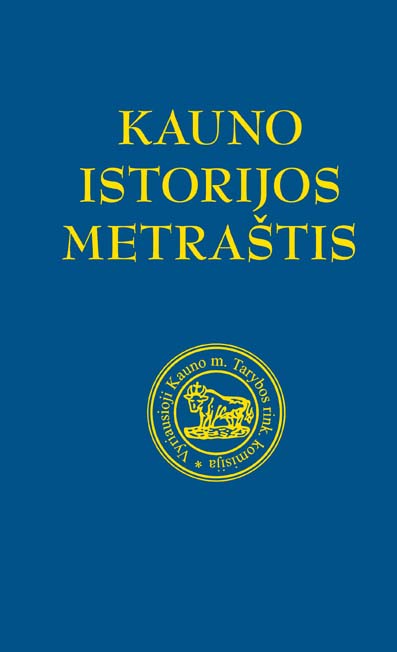Babilonas Kaunas: Juozo ir Elenos Daugirdų namų gyventojai 1931–1944 m.
Babylon Kaunas: The Inhabitants of the Houses of Juozas and Elena Daugirdas 1931–1944
Author(s): Asta Naujokaitė-HermanspahnSubject(s): History, Local History / Microhistory, Interwar Period (1920 - 1939), WW II and following years (1940 - 1949)
Published by: Vytauto Didžiojo Universitetas
Keywords: 30 Vytauto Prosp.; Kaunas; Juozas Daugirdas; Elena Daugirdas; Lilia Daugirdaite; Vladimiras Dubeneckis;
Summary/Abstract: The article features the former residents of the houses of the „Drobė“ company director, Lithuanian American Juozas Daugirdas and his wife Elena Daugirdas at 14 Vytauto Prospektas (now 30 Vytauto Prosp. and 6 Bažnyčios St.) in Kaunas. The aim of the research was to identify the first inhabitants, their „migration“ and their living habits and, at the same time, to clarify the number and characteristics of the rented premises and to collect as many first-hand testimonies as possible of the buildings and living spaces during the period concerned. The aim was also to find out exactly where the Daugirdas family lived during that time. The research period covers the time between the end of 1931, when the four-storey tenement building (designed by arch. V. Dubeneckis) was completed, to the second Soviet occupation in the summer of 1944. During this period, the houses were inhabited by many very different people. Among them were famous state and public figures, as well as controversial historical personalities – from high-ranking Lithuanian military officers and a foreign diplomat to a KGB agent. Their nationalities included Lithuanians, Jews, Poles, Germans, Russians, Dutch and French. Their fates – shootings, ghetto, exile, emigration or survival/adaptation. Often unknown… The houses at 14 Vytauto Prosp. are like a scaled-down model of Lithuania itself, a real Babylon Kaunas. Their early history reflects the diverse and complex history of the country at that time. The article gives a brief account of the life and activities of the people who lived there – the tenants and the owners’ family – and refers, if known, to their further fate. At the same time, it briefly describes the buildings and living spaces. New facts of life or circumstances relating to the houses/apartments are revealed in some detail. Many of the sources are presented for the first time. Most of the portrait and documentary photographs illustrating the article have also not yet been published. The chosen approach of researching the history of the houses – through the histories of their inhabitants – enabled to uncover a lot of new, hitherto unpublished information (e.g. about Julius Quittner working there, or about the owners, the Daugirdas family), and to answer some questions or to clarify contradictory information, as well as to find some unexpected connections (Daugirdaite–Nakas).
Journal: Kauno istorijos metraštis
- Issue Year: 2021
- Issue No: 19
- Page Range: 125-196
- Page Count: 72
- Language: Lithuanian

